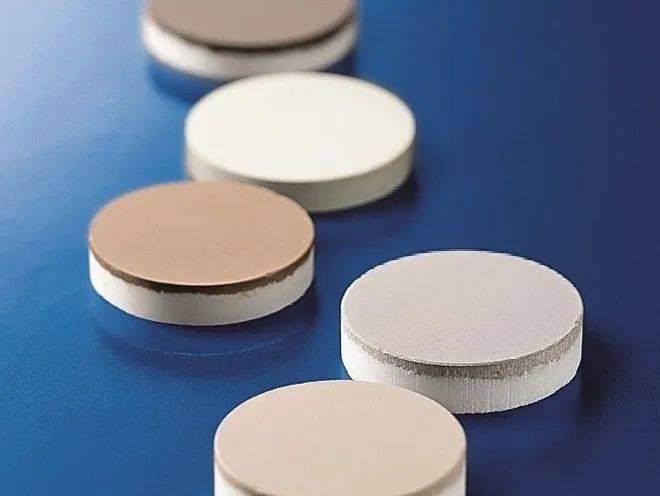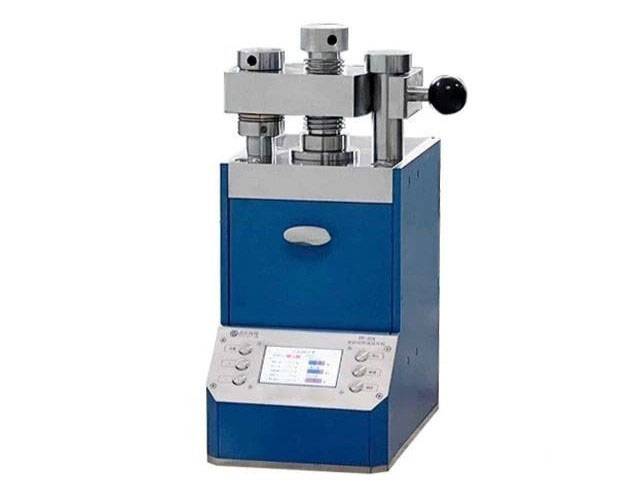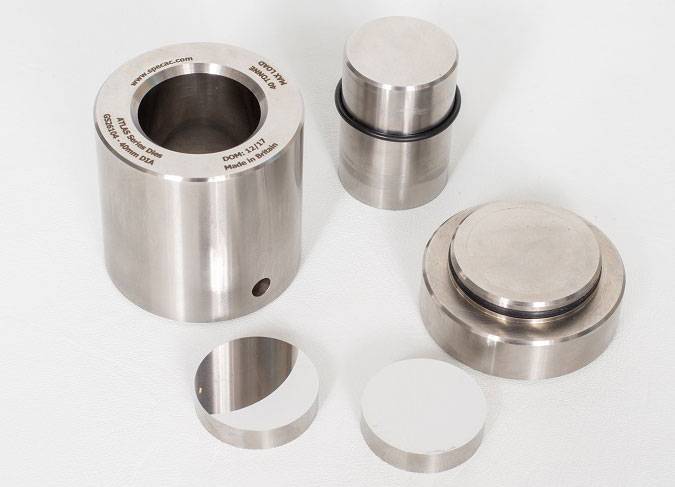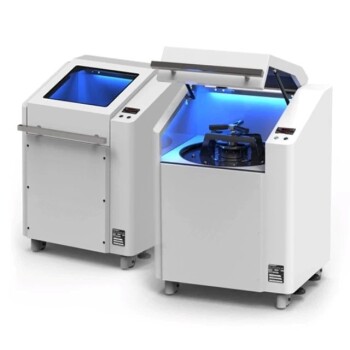What is XRF?
X-ray fluorescence (XRF) analysis is a technique used to determine the elemental composition of a sample. It works by bombarding the sample with X-rays and measuring the energy of the fluorescence radiation that is emitted from the sample as a result. The energy of the fluorescence radiation is characteristic of the elements present in the sample, so by measuring it, it is possible to identify which elements are present and in what proportions.

Sample preparation for XRF analysis is an important step in the process, as it can have a significant impact on the accuracy and precision of the results.
Methods to prepare sample for XRF analysis
Depending on the nature of the sample and the requirements of the analysis. Some common methods include:
Grinding: This involves using a mortar and pestle or a mechanical grinder to reduce the sample to a fine powder. Grinding is often used for solid samples, such as rocks and minerals.
Pressing: This involves using a press to compact the sample into a pellet or tablet. Pressing is often used for powders or other soft samples.

Fusion: This involves melting the sample and casting it into a mold to create a homogeneous solid. Fusion is often used for samples that are difficult to grind or press, such as ceramics or glasses.
Regardless of the sample preparation method used, it is important to ensure that the sample is as homogeneous as possible and that the surface is smooth and flat. This can be achieved by carefully following the appropriate sample preparation procedures and using appropriate equipment.
It is also important to prepare a series of standards with known elemental compositions to use as reference materials for the XRF analysis. These standards should be prepared using the same methods as the sample to ensure that they are comparable. The standards can be used to calibrate the XRF instrument and to check the accuracy of the results.
What is XRF tablet press
An XRF tablet press is a machine used to prepare samples for X-ray fluorescence (XRF) analysis by pressing them into a uniform tablet or pellet form. This is often done with powders or other soft samples that are difficult to grind or fuse.
The tablet press consists of a set of dies, or molds, that are used to shape the sample into the desired form. The sample is placed into the dies and subjected to high pressure, which compacts it into a uniform tablet or pellet. The tablets or pellets can then be placed in the XRF instrument for analysis.

There are several factors to consider when using an XRF tablet press, including:
Sample size and density: The size and density of the sample will determine the amount of pressure that is required to produce a uniform tablet or pellet.
Die size and shape: The size and shape of the dies will determine the size and shape of the tablets or pellets that are produced.
Pressing force: The pressing force, or the amount of pressure applied to the sample, will affect the density and strength of the tablets or pellets.
Pressing time: The pressing time, or the length of time that the sample is subjected to pressure, will also affect the density and strength of the tablets or pellets.
By carefully controlling these factors, it is possible to produce uniform tablets or pellets that are suitable for XRF analysis.
How to use XRF tablet press
To use an XRF tablet press, follow these steps:
- Select the appropriate dies for the size and shape of the tablets or pellets that you want to produce.
- Place the sample into the dies, making sure that it is evenly distributed and that there are no air pockets.

- Close the dies and apply pressure to the sample using the press. The amount of pressure will depend on the size and density of the sample.
- Hold the pressure for the desired length of time. The pressing time will depend on the size and density of the sample, as well as the strength of the tablets or pellets that you want to produce.
- Release the pressure and remove the tablets or pellets from the dies.
- Place the tablets or pellets in the XRF instrument for analysis.
It is important to follow the manufacturer's instructions for the specific XRF tablet press that you are using, as different models may have slightly different operating procedures. It is also important to ensure that the sample is representative and homogeneous, and to use appropriate sample preparation methods to avoid matrix effects and other sources of error.
How to choose
There are several factors to consider when choosing an XRF tablet press for your laboratory:
- Die size and shape: The size and shape of the dies will determine the size and shape of the tablets or pellets that are produced. Make sure to choose a tablet press that has a range of die sizes and shapes that are suitable for your needs.
- Pressing force: The pressing force, or the amount of pressure applied to the sample, will affect the density and strength of the tablets or pellets. Make sure to choose a tablet press that has a pressing force that is suitable for your needs.
- Pressing time: The pressing time, or the length of time that the sample is subjected to pressure, will also affect the density and strength of the tablets or pellets. Make sure to choose a tablet press that allows you to adjust the pressing time as needed.
- Ease of use: Choose a tablet press that is easy to operate and maintain, and that has user-friendly controls.
- Compatibility with other equipment: Make sure to choose a tablet press that is compatible with the other equipment in your laboratory, such as the XRF instrument that you will be using for analysis.
For technical specifications, please refer to the following table. For details, please click on the product page to view.
| Instrument model | PMXA-30T | PMXA-40T | PMXA-60T |
|---|---|---|---|
| Pressure Range | 1-30.0 tons | 0-40.0 tons | 0-60.0 tons |
| Pressurization process | Program pressurization - Program pressure maintaining - Timed pressure relief-Automatic sample withdrawal | Program pressurization - Program pressure maintaining -Timed pressure relief-Automatic sample withdrawal | Program pressurization - Program pressure maintaining - Timed pressure relief-Automatic sample withdrawal |
| Hold time | 1 second to 0 seconds | 1 second to 0 seconds | 1 second to 0 seconds |
| Pressure conversion | Program automatically converts the pressure borne by the mold | Program automatically converts the pressure borne by the mold | Program automatically converts the pressure borne by the mold |
| Display | 4.3 inch LCD screen | 4.3 inch LCD screen | 4.3 inch LCD screen |
| Metal buttons | Silver plated contacts with a service life ofover100000 times | Silver plated contacts with a service life of over100000 times | Silver plated contacts with a service life ofover100000 times |
| Built in mold | Boric acid/steel ring/plastic ring mold (built-in 1 set of mold) | Boric acid/steel ring/plastic ring mold (built-in 1 'set of mold) | Boric acid/steel ring/plastic ring mold (built-in 1 set of mold) |
| Sample size | Sample size standard configuration 40mm | Sample size standard configuration40mm | Sample size standard configuration40mm |
| Mold material | 440C mold steel | 440C mold steel | 440C mold steel |
| Demoulding method | Automatic stripping | Automatic stripping | Automatic stripping |
| Externaldimensions | 250×390×460mm(L×W×H) | 280×460×550mm(L×W×H) | 300×520×580mm(L×W×H) |
| Equipment power supply | 550W (220V/110 can be customized) | 550W(220V/110 can be customized) | 550W(220V/110 can be customized) |
| Equipmentweight | 120Kg | 150Kg | 180Kg |
| Dimensional diagram of powder tablet press | See picture below | See picture below | See picture below |
By considering these factors, you can choose an XRF tablet press that is suitable for your laboratory and meets your specific needs.
Conclusion
The sample preparation methods and the quality of the sample can have a significant impact on the accuracy and precision of the results.
To ensure accurate and reliable results from XRF analysis, it is important to carefully follow the appropriate sample preparation procedures and use appropriate equipment. This includes selecting a representative portion of the material being analyzed and ensuring that it is in a form that can be easily placed in the XRF instrument. It is also important to ensure that the sample is as homogeneous as possible, and to prepare the surface of the sample so that it is smooth and flat.
In addition, it is often necessary to prepare a series of standards with known elemental compositions to use as reference materials for the XRF analysis. These standards should be prepared using the same methods as the sample to ensure that they are comparable. The standards can be used to calibrate the XRF instrument and to check the accuracy of the results.
By carefully preparing the sample and using appropriate standards, it is possible to obtain accurate and reliable results from XRF analysis.
Related Products
- Automatic Laboratory Hydraulic Press for XRF & KBR Pellet Press
- Laboratory Hydraulic Pellet Press for XRF KBR FTIR Lab Applications
- XRF & KBR steel ring lab Powder Pellet Pressing Mold for FTIR
- XRF & KBR plastic ring lab Powder Pellet Pressing Mold for FTIR
- XRF Boric Acid Lab Powder Pellet Pressing Mold for Laboratory Use
Related Articles
- Automated laboratory XRF and KBR pellet press operating procedures
- Why Your Sample Prep Fails: The Hidden Flaw in Your Hydraulic Press
- A Comprehensive Guide on Pressing XRF Pellets Using a KinTek Automatic Hydraulic Press
- Understanding Cold Isostatic Pressing (CIP) and Its Advantages
- Effective Preparation of Samples for XRF Analysis via Pressed Pellets Method


















